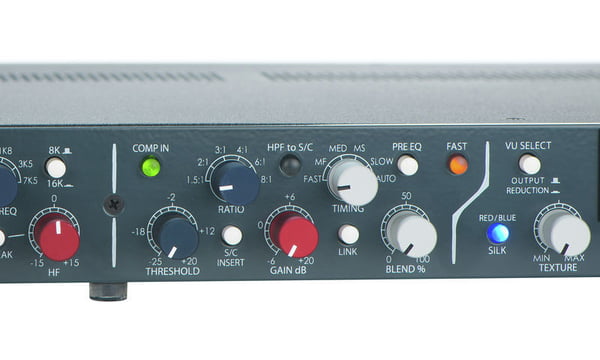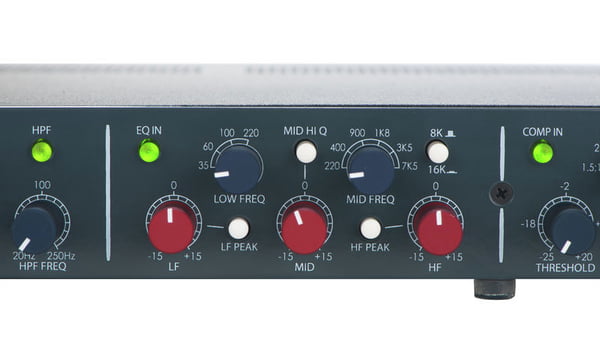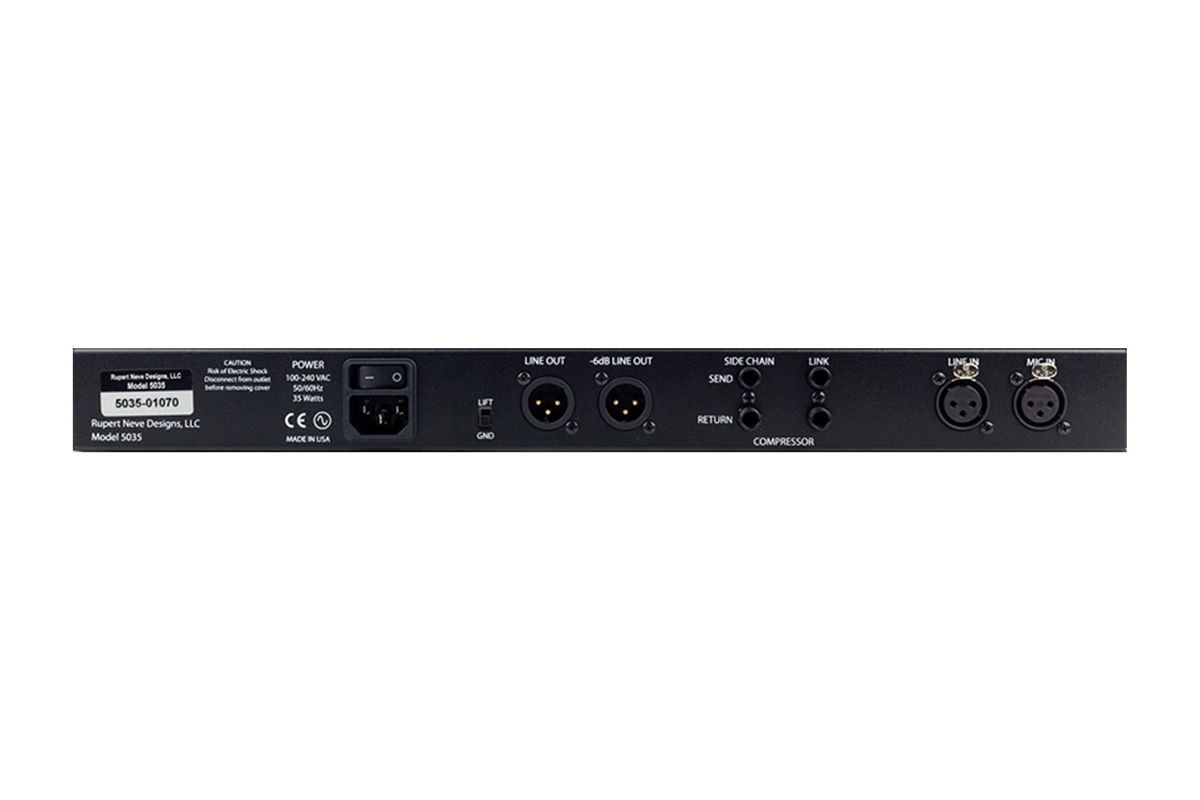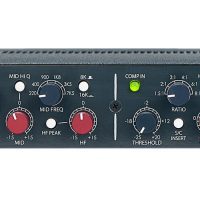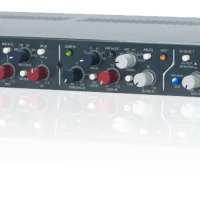Product omschrijving
A Whole New Vintage.
The Shelford Channel is built around Rupert Neve’s first new transformer-gain, class-A microphone preamplifier in over 40 years, a “best-of-the-classics” inductor EQ section, a tone-packed diode bridge compressor, the power of variable Silk saturation, a new dual-tap transformer output stage, and twice the operating voltage of vintage designs.
“It’s like a time machine...you can look back and see what a 1073 actually sounded like when it was new.”
— MITCH DANE / JARS OF CLAY
Over fifty years in the making, the Shelford Channel is the definitive evolution of the original technologies in Rupert’s classic console modules like the 1073, 1064 & 2254, thoughtfully advanced and refined for the 21st century studio.
The Input Stage and Transformer Gain Mic Pre
Like Rupert’s designs from his time in Little Shelford , the Shelford Channel’s preamplifier uses a directly-coupled transformer input with gain provided by the custom transformer itself – a first in over 40 years for Rupert Neve. This new custom-designed input transformer, along with its careful integration with the surrounding class-A circuitry, is critical to the Channel’s bold and instantly recognizable character.
Conveniently, the Direct Input uses the same topology as the best-selling RNDI Active Transformer Direct Interface, providing astonishing clarity for high-Z instrument signals, with unparalleled low-frequency response and an incredibly smooth high end.
Silk
The Silk & Texture circuit on the Shelford Channel allows you to fine-tune the amount (and type) of harmonic content in the output stage. This means your signal can be adjusted from quite transparent to settings that produce nearly 10x the amount of sonic color as Rupert’s vintage modules – and in two very unique modes. No matter what sound you’re looking for, Silk can help get you there.
When you apply SILK RED, you’re enhancing harmonic content generated by the highs and high mids of your source. This adds a sparkly sheen to the top end, and is often ideal for sources including vocals, snare, strings, pianos, and other acoustic instruments.
With SILK BLUE, you’re enhancing harmonics generated by the lows and low mids of your source. This tends to “beef up” a signal from the bottom up, making it a great choice for drums, bass guitars, heavy electric guitars, male vocals, and synthesizers.
The Dual Tap Transformer Output
Complementing the Silk circuit is the custom-designed output transformer, which uses Rupert Neve Designs’ unique dual-tap output topology. This offers both full-headroom (+26dBu) and -6dB outputs, allowing the engineer to drive the unit fully into classic transformer saturation without clipping converters and other devices later in the chain.
The high headroom tap is designed capture a more pristine sound at high levels, avoiding non-linear coloration of the output stage and taking full advantage of the Shelford’s higher voltage design. The low headroom tap however is optimized to allow an engineer to drive the full voltage range of the Channel – adding dynamic tone with these same non-linear “colorations” – without clipping most professional interfaces. On drums, vocals, guitars and other instruments, this output lets you easily hit the transformer’s “sweet-spot” of non-linear harmonic content, which can bring a recorded performance to life in a way that other effects can’t.
The “Best-Of” EQ
The Shelford Channel’s 3-band, custom-tapped inductor EQ was inspired by our favorite elements of Rupert’s vintage EQ designs. The low frequency band is designed to produce a creamy, resonant bass response similar to a vintage 1064 – but unlike the vintage modules, the LF band on the Shelford Channel can be used as either a shelf or a peak filter, adding punch, dimension, and control to your low end.
The midrange band is based on that of the 1073, ideal for sweetening vocals and instruments while bringing them forward in a mix, and its proportional “Q” response makes it well-suited for minimizing problematic frequencies. The high frequency band is a hybrid vintage / modern design, blending inductor circuitry with capacitor-based topologies to achieve vintage tones with enhanced control, with the shelf / peak corner switchable between 8K or 16K.
The Diode Bridge Compressor
Like the Inductor EQ and Transformer Gain microphone preamp, the Diode Bridge Compressor in the Shelford Channel is based on the same topologies found in Rupert’s vintage designs – but refined & adapted for the modern engineer.
What is diode bridge compression? Where the VCA compressor found in the Master Buss Processor provides unmatched clarity, the weighty, harmonically rich tonality of diode bridge compression can be essential in pushing key sources like vocals, electric guitars, bass and drums to the forefront of a mix.
By understanding the limitations of vintage units like the legendary 2254, painstaking effort was taken to reproduce the unique tone of these classics while improving the noise floor & accuracy, expanding inflexible time constants, adding full wave sidechain detection for improved dynamic response, and widening the range of threshold and ratio controls.
Delivering the powerful sound of these iconic designs with enhanced flexibility for the modern age, the Shelford’s diode bridge compressor is a dynamic tool equipped to make a statement on virtually any mix or track.
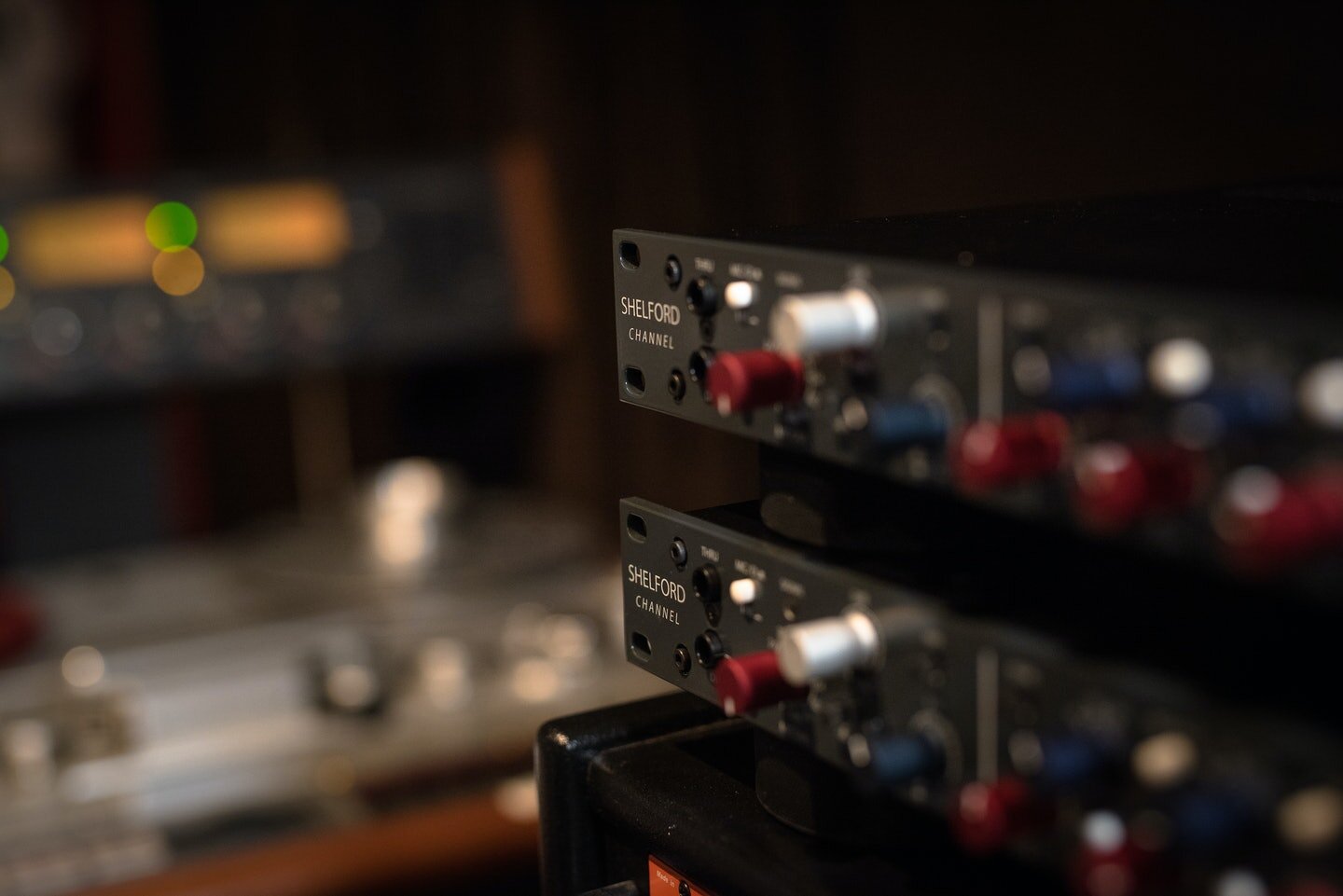
Silk / Texture
Pushing the Silk button cycles the Silk modes from Red to Blue to OFF. Silk reduces the negative feedback on the output transformer, adding harmonic content as the texture is increased. Red Silk accentuates the musical harmonic saturation from the mid and high frequencies, while Blue Silk accentuates harmonics from the low and low-mid frequencies. By manipulating the Texture control, the amount of Silk can be changed from essentially absent, to roughly 4-5% THD (mostly second order) depending on how hard the output transformer is being driven.
DI / THRU
The Hi-Z front panel input uses the same discrete class-A FET with transformer topology as the Rupert Neve Designs RNDI, but it utilizes the new RN4012 input transformer directly into the microphone preamp for gain. This design, delivers exceptional clarity to high-Z sources, with a substantial low-end presence and incredibly smooth high frequencies. The DI also includes a passive THRU output to feed a separate amplifier.
MIC/DI & LINE
Switches between microphone/direct injection input (button out) or line input (button in).
Gnd Lift
This switch separates the direct connection from audio signal ground to chassis earth.
Signal Present LED
This LED is dual function. When green, it indicates “Signal Presence” (a signal level of -20dBu). When red, it indicates 2-3dB below input stage clipping of the Mic/Line stage (+23 dBu while the pre actually clips at +25 dBu).
Mic Gain
This 12-way precision rotary switch controls gain from 0 to 66 dB in 6 dB steps.
Trim
This rotary switch provides further continuous gain adjustment over a range of +/– 6 dB.
48V
This push button switch engages phantom power on the microphone input.
Polarity
This push button switch inverts the polarity of the signal path. It illuminates when engaged. (The symbol “Ø” is often used to denote opposite polarity.)
HPF / HPF FREQ
The HPF switch engages a 12dB per octave high pass filter. The HPF FREQ potentiometer is variable from 20Hz to 250Hz, and can be used to filter out unwanted low frequencies, or in conjunction with the EQ to help shape source material. Note that engaging the HPF to S/C switch moves the HPF from the primary signal path to the compressor side-chain signal path.
EQ In
This switch engages all EQ frequency bands except the HPF.
LF EQ
+/- 15dB, Shelf or Peak, selectable at 35 Hz, 60 Hz, 100 Hz or 220 Hz.
MID EQ
+/- 15dB with 6 center frequencies; 220 Hz, 400 Hz, 900 Hz, 1.8 kHz, 3.5 kHz and 7.5 kHz, with MID HI Q switch to narrow the bandwidth or increase the Q of the filter.
HF EQ
+/- 15dB, Shelf or Peak, selectable at 8 kHz or 16 kHz.
Comp In
The compressor-limiter section is engaged with this button in.
Threshold
Sets level where the compressor may begin to react, from -25 dB to +20 dB. Minimal or no compression is with this control fully clockwise and it gets more sensitive and tends to cause more gain reduction as the knob is rotated counter-clockwise.
Ratio
Sets the “slope” of the compression from 1.5:1 (minimal) to 8:1 (significant).
SC (Side Chain) Insert
When engaged, this inserts an external device into the side-chain signal path via the rear panel side-chain insert jacks. These pairs of jacks are used to perform some fine-tuning of the compressor operation. The audio that normally controls the compressor is available on the “SIDE CHAIN SEND” jack. One can take this audio and pass it through an external equalizer then return it back to the “SIDE CHAIN RETURN” jack, so changes on the external EQ affect the response of the compressor.
HPF to S/C
This routes the High Pass Filter into the side chain of the compressor circuit.
Gain
Applies post-compressor make-up gain.
Timing
This six-position controls adjusts the attack/release speed of the compressor. For specific timing values, see Specifications below, or reference the manual.
Link
Links the side-chain control of multiple units for ganged operation, such as would be used in stereo compression.
Pre EQ
Pushing this button places the Compressor before the EQ in the circuit.
Blend
This controls the mixture of the dry, uncompressed signal with the compressed signal. Fully counter-clockwise is uncompressed, and is very similar to not having the “COMP IN” button pushed in. Fully clockwise is 100% compressor-limiter path.
Fast
When pressed, speeds up both the attack and release of the compressor’s selected time constant.
VU Meter
The VU Meter is calibrated to display both average (RMS) output level and compressor gain reduction
Peak LED
Red indicates near clipping of the output stage.
Dual Tap Output
In addition to the MAIN full-headroom output, the -6dB output creates a rich harmonic character while reducing the risk of clipping the next device in the chain.
Universal IEC Power Input
Works worldwide, accepting voltages from 100-240VAC.

 Product is toegevoegd aan uw winkelwagen
Product is toegevoegd aan uw winkelwagen

